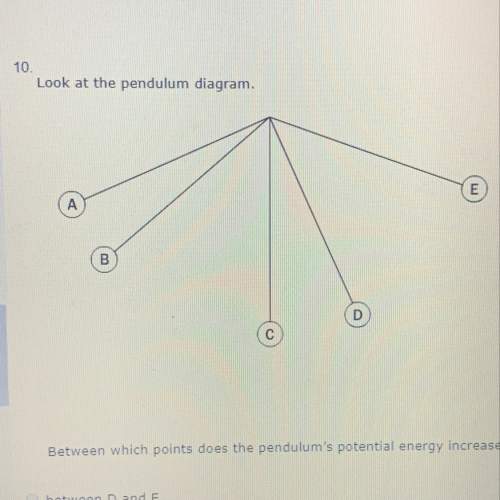
Physics, 27.03.2020 06:20 Smileymarie31511
If an object on a horizontal, frictionless surface is attached to a spring, displaced, and then released, it will oscillate. If it is displaced 0.120 m from its equilibrium position and released with zero initial speed, then after 0.800 s its displacement is found to be 0.120 m on the opposite side, and it has passed the equilibrium position once during this interval. Find (a) the amplitude; (b) the period; (c) the frequency. 14.3 . The tip of a tuning fork go

Answers: 1


Another question on Physics

Physics, 21.06.2019 20:10
Current 1 of 8.4 a runs for 240 seconds and then stops. current 2 is 10.5 a. how long does current 2 have to un to deliver the same amount of charge as current 1? 88.28 192 s 2016 s 21,000 s
Answers: 2

Physics, 22.06.2019 14:30
Which compound is held together by the electrostatic force between two ions? a. co2 b. cci4 c. h2s d. mgf2
Answers: 1

Physics, 22.06.2019 18:30
Calculate the velocity of a car traveling in a straight path due east with a distance of 16 meters in 2 seconds. question 1 options: a)32 m/s b)32 m/s e c) 8 m/s e d) 8 m/s
Answers: 2

Physics, 22.06.2019 20:50
In a game of pool, ball a is moving with a velocity v0 of magnitude v0 = 15 ft/s when it strikes balls b and c, which are at rest and aligned as shown. knowing that after the collision the three balls move in the directions indicated and assuming frictionless surfaces and perfectly elastic impact (that is, conservation of energy), determine the magnitudes of the velocities va, vb, and vc.
Answers: 3
You know the right answer?
If an object on a horizontal, frictionless surface is attached to a spring, displaced, and then rele...
Questions


Social Studies, 11.12.2019 21:31







English, 11.12.2019 21:31









Physics, 11.12.2019 21:31





